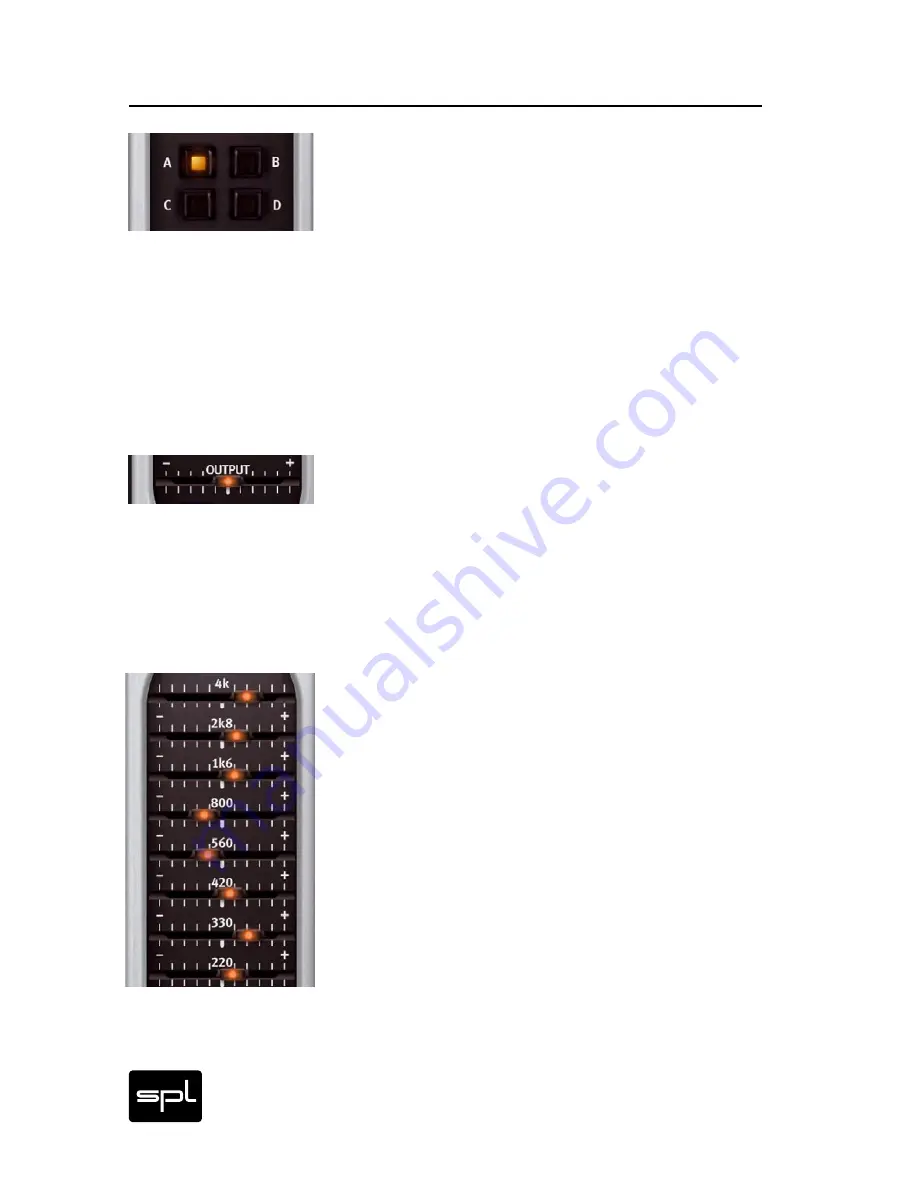
8
EQ Rangers Analog Code
®
Plug-ins
Control Elements
Settings A, B, C, D
The settings feature allows to store four different sets
of adjustments (A, B, C, D). Much faster than with the
usual save and recall preset dialogs, the respective
current setting is stored automatically when you switch to another
setting—to recall previous settings by just one click. For example,
leaving setting A (by calling another setting) stores the current
parameter setting under A, calling B restores the last adjustment
made under B. Settings A, B, C, D can also be included into the
automation of host applications to apply different sets of param-
eters to different parts of a song.
Output
With the OUTPUT fader control you can readjust levels
that were changed by previous EQ settings. For exam-
ple, if you have by and large applied cut values to the signal, the
overall output level can be lifted again to meet the input level’s
value. The same of course applies vice versa: simply lower the
output to compensate for boosts.
Faders
Each EQ Ranger plug-in provides nine fader controls
(also refer to “Mouse Weel Control” on page 6). The
upper eight faders control the eight frequency bands,
the lowest fader controls the output stage. The bell
filters have individually optimized bandwidths and
boost/cut values. The frequency range around the
center frequency can be boosted (fader into direction
“+”) or can be cut (fader into direction “-”). On the fol-
lowing pages we give examples for setting the bands
of each EQ ranger plug-in. This is of course not a com-
plete list—we just want to give some orientation to
start from.

































